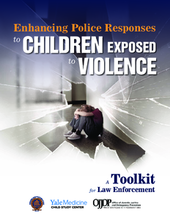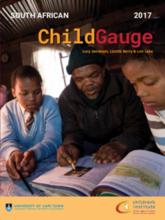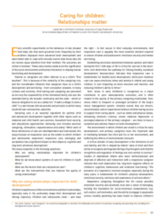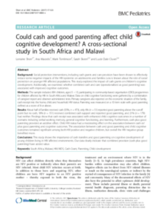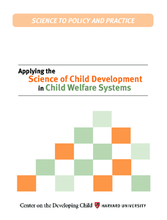Displaying 291 - 300 of 496
This new toolkit provides practical tools and resources to assist law enforcement agencies in building or enhancing effective operational responses to children exposed to violence (with or without a mental health partner). This toolkit contains tools targeted to police leaders and frontline officers.
This study explored the scholastic performance of orphaned learners aged eight to ten from ten public primary schools in Mankweng Circuit of Limpopo Province, South Africa, utilizing quantitative and qualitative methods that included semi structured interviews, observations and questionnaires.
The South African Child Gauge® is published annually by the Children’s Institute, University of Cape Town, to monitor progress towards realising children’s rights. This issue focuses on children and the Sustainable Development Goals.
In this essay from South African Child Gauge 2017, the authors seek to respond to the following questions: Why are caring relationships important for children’s development? What do we know about systems of care for children in South Africa? What are the factors that can compromise care? What are the interventions that can improve the quality of caring relationships?
In The Adolescent Brain: A second window of opportunity, a new compendium publication produced by UNICEF Innocenti, eight experts in adolescent neuroscience present emerging findings from their research.
The Annie E. Casey Foundation's 2016 KIDS COUNT Data Book finds today's youth — Generation Z — are healthier and completing high school on time despite mounting economic inequality and increasingly unaffordable college tuition.
This study explored the impact of cash grants on children’s cognitive development. Additionally, the authors examined whether combined cash and care (operationalised as good parenting) was associated with improved cognitive outcomes.
As part of NOVA's look at childhood education, Dr. Charles Nelson came to this Boston Cafe Sci to share his research on the effects of early profound adversity on child and brain development.
This report identifies key communications challenges faced by experts and advocates as they seek to elevate support for public policies that will best serve the developmental needs of all children in South Africa.
This paper explores the ways that developmental science can inform and strengthen the child welfare system to better support the children, families, and communities it serves.

